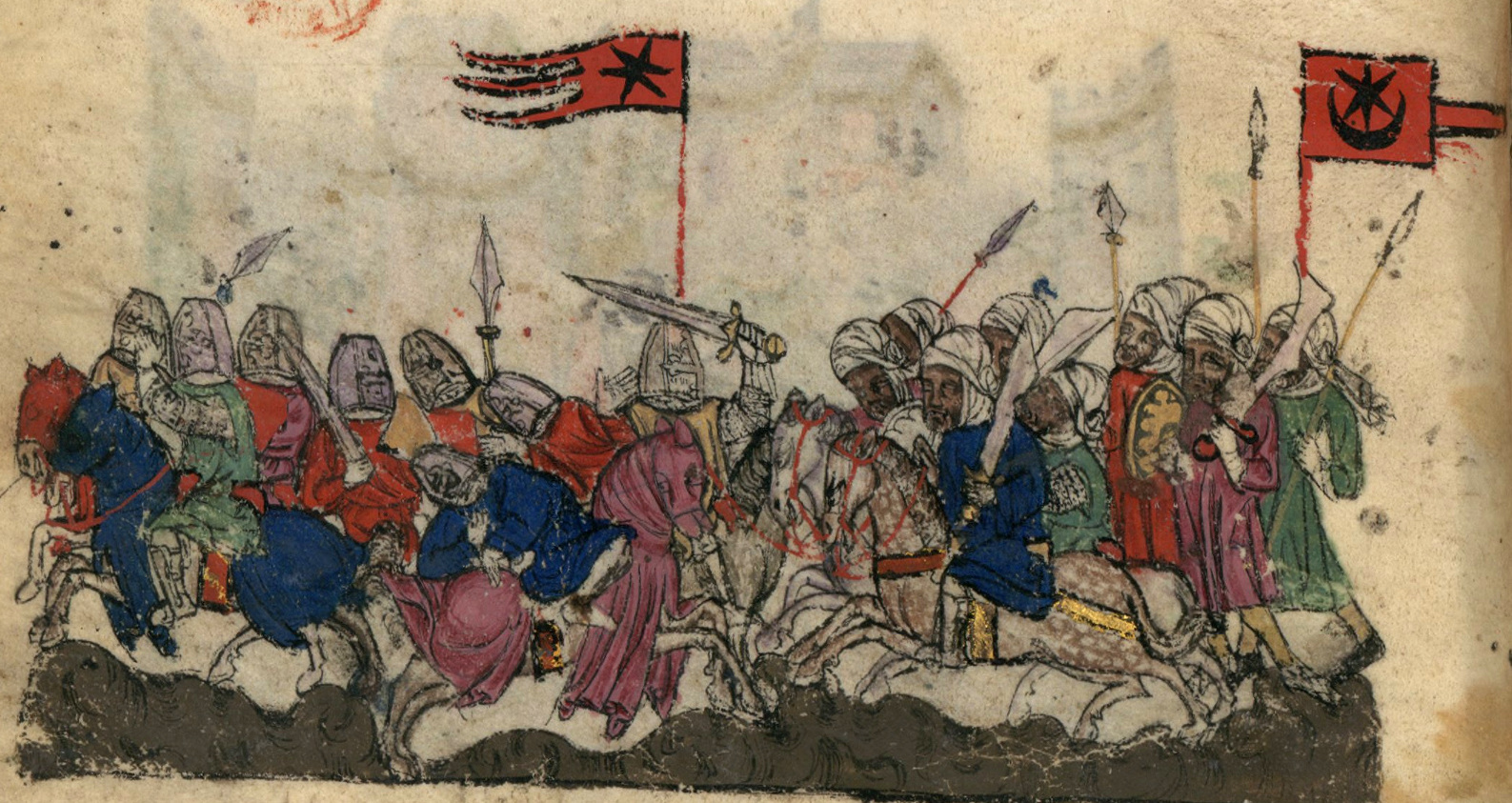"The fiery zeal and warlike enthusiasm of the Templars were equalled, if not surpassed, by the stern fanaticism and religious ardour of the followers of Mahomet. “Noureddin fought,” says his oriental biographer, “like the meanest of his soldiers, saying, ‘Alas! it is now a long time that I have been seeking martyrdom without being able to obtain it.’
The Imaum Koteb-ed-din, hearing him on one occasion utter these words, exclaimed, ‘In the name of God do not put your life in danger, do not thus expose Islam and the Moslems. Thou art their stay and support, and if (but God preserve us therefrom) thou shouldest be slain, it will be all up with us.’ ‘Ah! Koteb-ed-deen,’ said he, ‘what hast thou said, who can save Islam and our country, but that great God who has no equal?’ ‘What,’ said he, on another occasion, ‘do we not look to the security of our houses against robbers and plunderers, and shall we not defend religion?’”
Like the Templars, Noureddin fought constantly with spiritual and with carnal weapons. He resisted the world and its temptations by fasting and prayer, and by the daily exercise of the moral and religious duties and virtues inculcated by the Koran. He fought with the sword against the foes of Islam, and employed his whole energies, to the last hour of his life, in the enthusiastic and fanatic struggle for the recovery of Jerusalem.
The close points of resemblance, indeed, between the religious fanaticism of the Templars and that of the Moslems are strikingly remarkable. In the Moslem camp, we are told by the Arabian writers, all profane and frivolous conversation was severely prohibited; the exercises of religion were assiduously practised, and the intervals of action were employed in prayer, meditation, and the study of the Koran."
This blog quotes freely from the thesis by Lori Firth, Hull University (2012): "A Comparison of the Cistercian and Knights Templar Orders, And the Personal Influence of Bernard of Clairvaux", to be found here. References in the source. Illustration: Muslim forces of the Rashidun Caliphate captured the Levant – a region of the Middle East – from the Byzantine Empire in A.D. 636. source Wikimedia Common, Public Domain

No comments:
Post a Comment